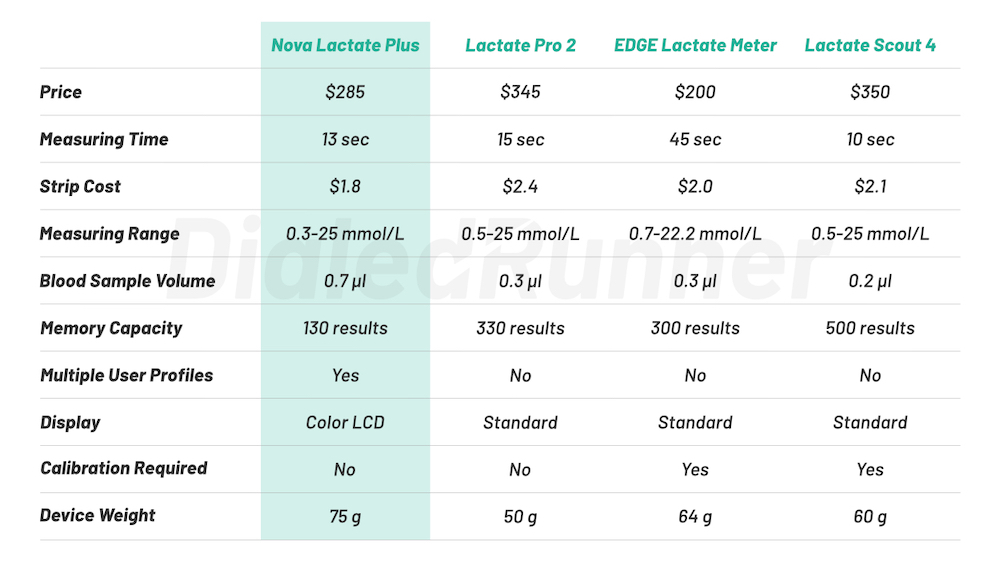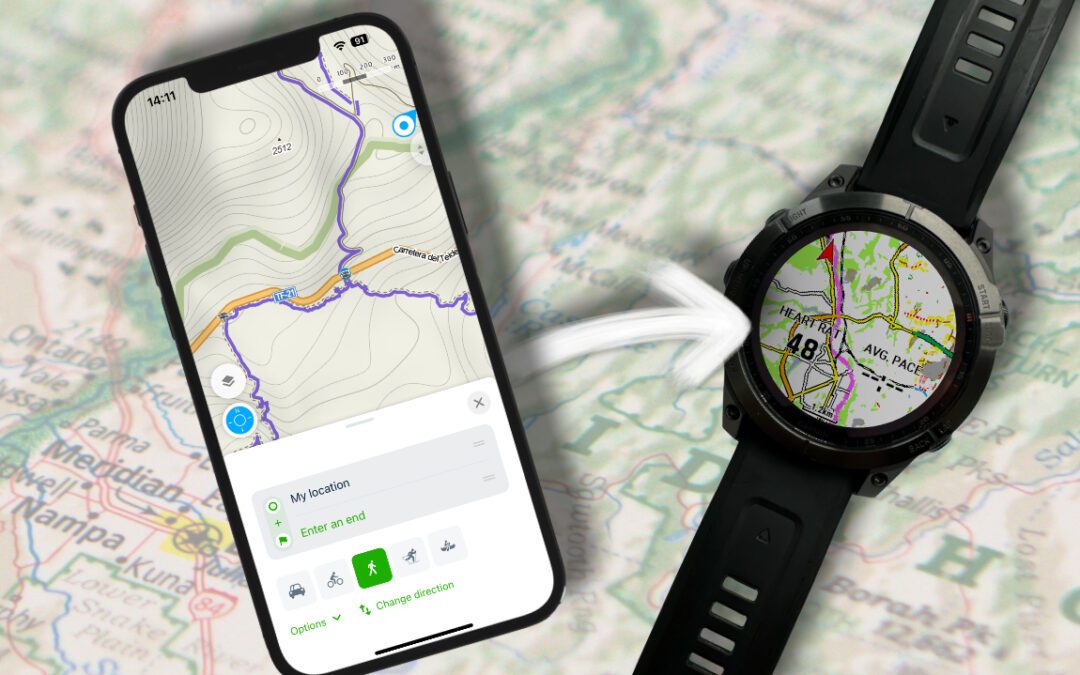There’s quite a bit of buzz around lactate testing in endurance sports these days. From the likes of Ingebrigtsen and Blummenfelt, we see lactate testing as a tool from which they draw a lot of value. As a runner who strives to up his game, I decided to purchase the Nova Lactate Plus Analyzer to see whether it’s a tool that can genuinely contribute to my training regimen and ultimately elevate my performance.
The purpose of this review is not to go into too much detail about the validity and reliability of the Lactate Plus analyzer, which was demonstrated in various studies [1, 2]. Instead, I’m offering a user perspective grounded in the experiences of an avid runner with a passion for physiology and its relationship to training. If this approach resonates with you, I believe you’ll find value in this review.
Also, while I do have a semester in Exercise Physiology, I’m by no means an expert, so keep that in mind. On the other hand, if you are an expert in this field who stumbled on this article, I’ll be happy to hear any feedback in the comments!
Review of the Nova Lactate Plus
Ease of Use
As someone who had never used a lactate meter before, I was wondering how difficult it’s going to be, especially in the heat of the moment when you are performing a test or between intervals.
To my surprise, using the device is relatively easy. To initiate the test, you only need to insert the test strip and wait for the device to boot up. Once you prepare your puncture site for a draw (finger or ear lobe), you simply touch the blood drop with the tip of the test strip and wait for the capillary action to do its job. In contrast to the popular EDGE analyzer, where you approach the blood droplet from the side, this method feels less fiddly and more intuitive to me.
If there’s a challenge in using the analyzer, it’s mastering your ‘Titan Grip’ to keep the device rock steady, especially when you’re drawing a sample with your heart pounding at 180 bpm. Once the sample is taken, the Lactate Plus will confirm a successful drawing with a beep, and after 13 seconds, you have your lactate reading.
While operating the device itself is relatively simple, the procedure of lactate testing – cleaning the puncture site, lancing, wiping, etc. – is certainly the more challenging part. For this reason, it is wise to practice the procedure beforehand so it becomes second nature once you’re out testing.
Learning Curve: How Many Strips I Wasted?
Out of the 50 test strips I’ve used so far, I’ve had only one short sample (not enough blood in the sample) and four suspect readings (higher than expected). Follow-up tests confirmed that these high readings were indeed incorrect. In two of those instances, it was my mistake, and in the other two, I can only speculate. It could be due to sweat contamination or device error. Given that I’m a first-time user, I don’t find it too bad.
One thing I think worth mentioning is that the BMJ study reported a 1 in 10 short sample error rate, even when the procedure was conducted with “great care.” In contrast, out of my 50 tests, I only had one short sample, and that was due to my own fault. Effectively, I had zero errors. It’s unfortunate that the study doesn’t mention technical specifications like the software version of the device, leaving us in the dark about whether a software update could have rectified this issue.
Accuracy
During the testing, I also took up a few control tests to see how much they would differ. I was pleasantly surprised to see that the biggest difference compared to the primary sample was only 0.4 mmol/L, and on average, it was off by only 0.15 mmol/L. However, I only took six control samples, which is a very small sample size. Since the control test always came nearly identical to the initial reading, I didn’t feel like wasting more strips on this. It is important to mention that both studies mentioned earlier reported noticeably higher differences (variability).
Since I don’t have the tools, funds, or knowledge to perform a rigorous accuracy test, I highly recommend checking out the studies [1, 2] for those who want to get into the nitty-gritty of accuracy, like correlation coefficient, fixed and proportional bias, and all that jazz.
The good news is that both studies confirmed good accuracy and reliability of the device.
Finally, it’s worth noting that the Lactate Plus requires 7 microliters of blood for a sample. While it is a minuscule amount of blood, it’s actually a few hundred percent more than what some other devices require, which can go as low as 2 microliters. You might think this is a downside, but in fact, the larger sample volume minimizes the impact of contamination, thereby likely contributing to the consistent and accurate results I’ve experienced.
Technical Features of Nova Lactate Plus
Fast Results
The Lactate Plus is among the fastest analyzers on the market, delivering test results in just 13 seconds.
This quick turnaround is invaluable both in testing and interval training with short rest periods, like 30 seconds or a minute.
It allows me to adjust the next interval’s intensity on the fly or double-check a suspicious reading with a control sample, all without disrupting the flow of the workout.
Multiple User Profiles
A small but useful feature not found in competing devices. It is certainly nice to be able to choose from 10 different user profiles to record lactate values.
My main gripe with this feature is that only the main profile can store up to 20 lactate readings, while the rest are limited to 10. If you want to perform a lactate test, including clearance capacity, the memory likely won’t be enough to record all the readings, so you will still need a good ol’ pen and paper.
In the age of gigabytes and terabytes, this is just beyond me.
Large LCD
While a color LCD screen is standard in modern tech these days, it’s a standout feature among lactate analyzers. The display offers excellent readability, even in low-light conditions — a minor but noteworthy advantage, especially during winter months when the days are shorter.
Honorable Mentions
The Lactate Nova Plus sports the widest measuring range I’ve seen amongst its competitors (0.3-25 mmol/L). Given that my lactate levels dipped a few times down to 0.4 mmol/L, which goes below most devices’ detection threshold, having this range at my disposal has proven useful.
Also, the fact that you don’t need any calibration chip or code whenever you go to a new batch of strips adds to its convenience.
One “dishonorable mention” would be the tactile response of the buttons, which feels subpar. Additionally, the device feels a bit slow when changing profiles and going through recordings, but I guess at least it elicits the proper “medical device” experience.
Price & Cost Effectiveness
For about the cost of a pair of super shoes – $300 – you can have your own medical-grade device. This doesn’t seem like a bad deal to me.
I’ve heard Dr. Peter Attia on his podcast describe his rigorous “every 30 min. a day” lactate testing as “incredibly expensive and incredibly painful,” which is understandable. But, if you don’t go overboard like that, neither has to be true.
Sure, $48 for a pack of strips (25 pcs) is not exactly cheap, but given that you don’t need to test every day, not even every session, it’s not out of this world expensive. If you want to save money, you can retest every couple of weeks to see how things are moving and, between, use your heart rate as a proxy. It’s worth mentioning the test strips for this analyzer are among the cheapest on the market, which is an important factor in the long run. By Western standards, I’m not rich by any means (yet), but I’m able to afford it.
Why Did I Choose Nova Lactate Plus Analyzer Over the Competition?
The initial reason was because that’s what I saw the experts use in most of the YouTube videos of my favorite athletes. Digging deeper, I realized there are good reasons for it to be the device of their choice, and I believe I’ve outlined those in the previous sections of this article.
But to summarize them, here is a quick recap:
Nova Lactate Plus PROS
+ Result in 13 seconds
+ Accuracy
+ Wide lactate range (0.3-25mmol/l)
+ Nice display
+ Easy to take a sample
+ Memory for 10 different users
+ Affordable test strips
+ No calibration chips or codes needed
Nova Lactate Plus CONS
– The button response is a bit meh
– Can store only 10 results on the remaining 9 profiles
Here is the comparison with competing devices:
Practical Application – Did it Help My Training?
While equipment reviews typically focus on functionality and features, many aspiring athletes and enthusiasts might question: Are there any tangible benefits from incorporating a lactate analyzer into my training?
Here, I’d like to share some insights based on my personal experience so far.
- Objective Reality Check of My Training Intensity
After seven years of running, I’d still often wonder: “Am I going too hard or too slow on my easy runs?”. The first few readings from the Lactate Plus made me feel like I’m seeing my training objectively for the first time.
While I’ve been a proponent of the “go slow to go fast” mantra, I might have leaned into it a tad too much, especially with recent changes in my training. Don’t get me wrong, I still consider Zone 2 to be the foundation of endurance training, but this tool helped me correct my easy run intensity, steering me back on course. - Boosted My Confidence in My Fitness Level
Drawing from the research of San-Millán and Brooks, it’s evident that generally, the fitter an individual is, the lower their resting lactate levels tend to be. Seeing my resting values between 0.5-0.9 mmol/L was a reassuring indicator that I’m likely in good metabolic health and, for the most part, my training works. - New Insight Into My Recovery Status
I typically rely on subjective perception, resting heart rate, and HRV to gauge my recovery. However, since I started using Lactate Plus, I noticed that on certain days (often after key sessions), my lactate levels during my follow-up run were higher than usual — even when my resting heart rate and HRV were in the normal range. This was also confirmed by my subjective feeling during the workout, but interestingly enough, no other metric captured it. Although it’s premature to make definitive conclusions, the lactate analyzer seems promising as a neat little addition to my recovery-check toolkit. - Helped Me Identify My FATmax
Since studies show there is an inverse correlation between blood lactate and FATox, I was able to pinpoint a training intensity (heart rate) where my body uses fats most effectively. This is an important finding for any endurance athlete.
There are other things I’ve dipped my toes into, like the lactate curve, anaerobic threshold, and maximum lactate steady state. But to be honest, I feel it’s a tad early to lay out all my findings just yet. If there is enough interest, I may consider writing a more in-depth article about what I learned and how I utilize the Nova Lactate Analyzer in my training.
Final Thoughts
It’s probably clear by now that I consider the Nova Lactate Plus to be among the best analyzers on the market. But the real question might be, do you need one?
Being the nerd that I am, I would probably buy the lactate meter anyway, even if I wouldn’t be going after my next PR 😜. There’s a certain satisfaction in knowing just a bit more about the condition of my mitochondria. It feels like I’m more in tune with my body.
Aside from that, there have been some truly beneficial findings in terms of training, which I mentioned earlier, most notably viewing my training through a more objective lens for the first time.
On the other hand, it’s not a fix-it-all tool. It’s certainly not going to do the training for you, but it can help you do it at the right intensity, and that’s huge.
I guess the right approach is to see it as another tool in your toolbox. If you pin all your hopes on it, you’ll likely end up disappointed. However, if you view it as a tool to learn and grow with, it can offer great value.
Now, I can hear some of you asking: Wouldn’t it be easier to simply do a lactate test in a local sports lab? This is a legitimate point, and for some, this may be the right choice. However, the more I learn about the use of lactate in training, the more I see the value and importance of regular testing.
Aside from the fact that regular testing can become quite expensive over time, I’ve heard multiple experts mention that finding a good facility that follows the protocol correctly can be a challenge in and of itself. And in some cases, it can be hard to find any facility at all.
As of right now, I don’t find working with the device particularly challenging, even in terms of interpreting the data. But who knows, maybe the Dunning–Kruger effect will soon start to kick in.




![Best Garmin Fenix 7 Watch Faces [2024]](https://dialedrunner.com/wp-content/uploads/2023/11/Best-Garmin-Fenix-7-Watch-Faces-for-Different-Occasions-1080x675.jpg)

![How To Import Gpx Course To Garmin Connect on iPhone [2024]](https://dialedrunner.com/wp-content/uploads/2023/09/How-To-Import-Gpx-Course-To-Garmin-Connect-iPhone_Header-1080x675.jpg)
0 Comments